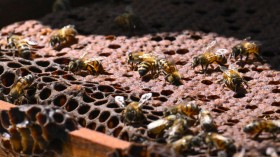Earth's ancient seas were starved for sulfate - a key nutrient - researchers realized, with levels measuring 80 times lower than previously thought, according to a new study.
Sulfur is a key biological nutrient for all marine organisms, in addition to playing a central role in regulating atmospheric chemistry and global climate. And the reported lack of sulfate millions of years ago paints a completely different picture of our planet's early biosphere and primitive marine life.
"Our findings are a fraction of previous estimates, and thousands of time lower than current seawater levels," Sean Crowe, the study's lead author and an assistant professor in the Departments of Microbiology and Immunology, and Earth, Ocean and Atmospheric Sciences at the University of British Columbia, said in a statement.
To better determine just how sulfate starved Earth's primordial ocean was, researchers analyzed bacterial sulfur metabolisms in Lake Matano, Indonesia - a modern lake with chemistry similar to Earth's early oceans. Using state-of-the-art mass spectrometric approaches on rock samples dating back 2.5 billion years or more, they discovered sulfate 80 times lower than previously thought.
"At these trace amounts, sulfate would have been poorly mixed and short-lived in the oceans - and this sulfate scarcity would have shaped the nature, activity and evolution of early life on Earth," Crowe explained.
Previous research has suggested that Archean sulfate levels were as low as 200 micromolar - concentrations at which sulfur would still have been abundantly available to early marine life.
But the new results indicate levels were likely less than 2.5 micromolar, thousands of times lower than what they are today.
So Earth's ancient oceans didn't exactly contain as much sulfate as we thought, why is this relevant? Well, the research team believes that with their more sensitive fingerprinting technique, they have created a powerful new tool that can help search for sulfur metabolisms deep in Earth's history or on other planets like Mars.
The results were published in the journal Science.
© 2024 NatureWorldNews.com All rights reserved. Do not reproduce without permission.





